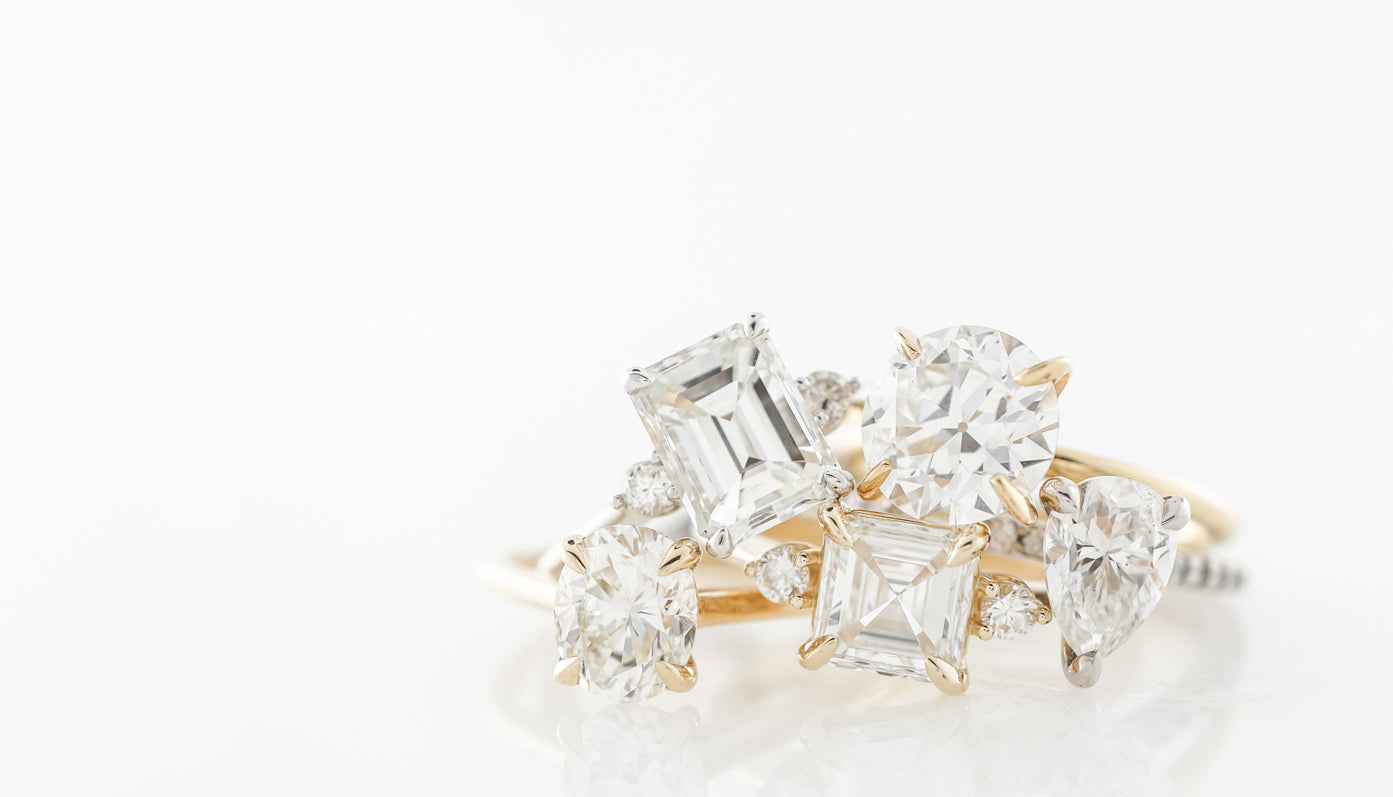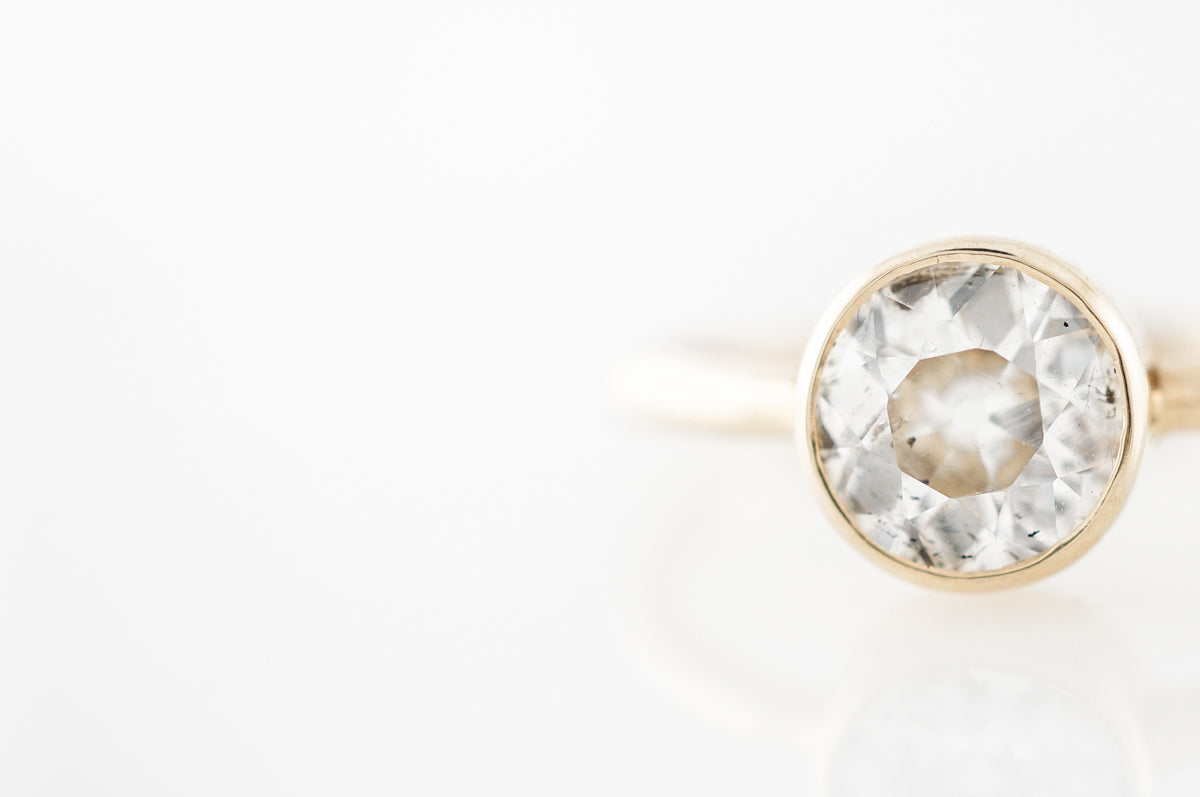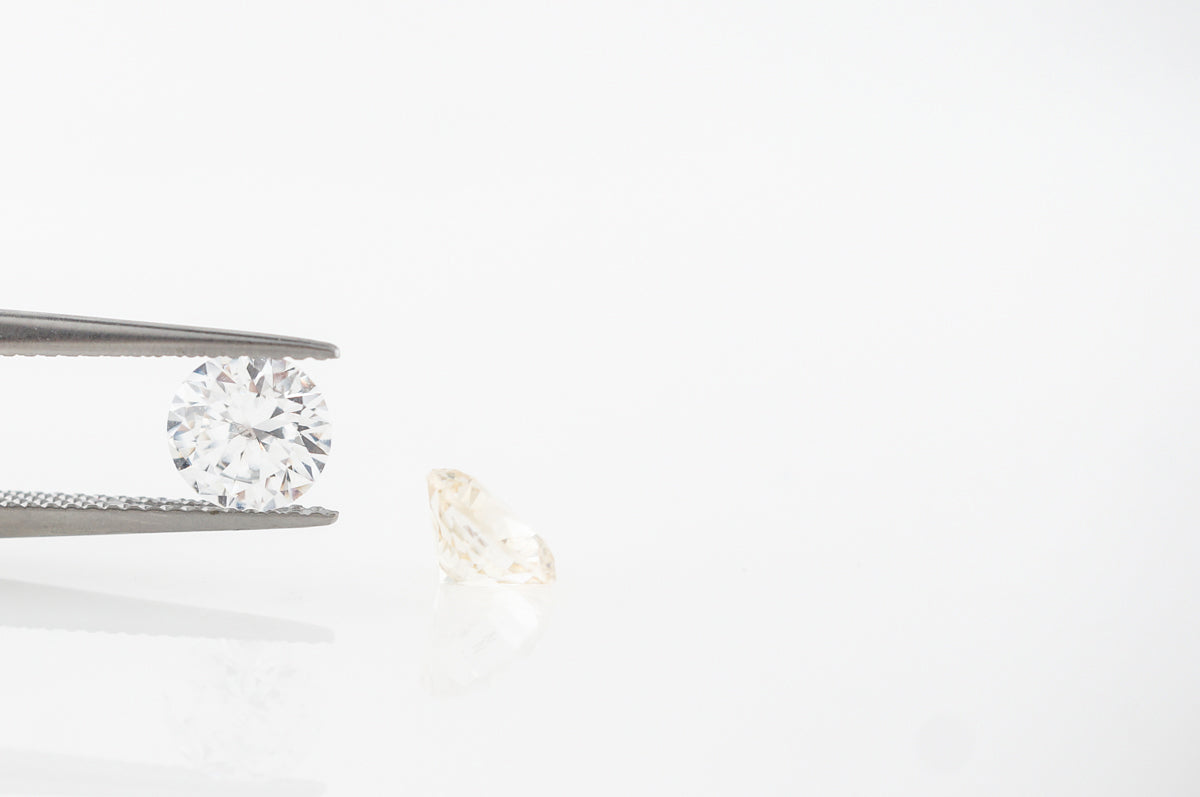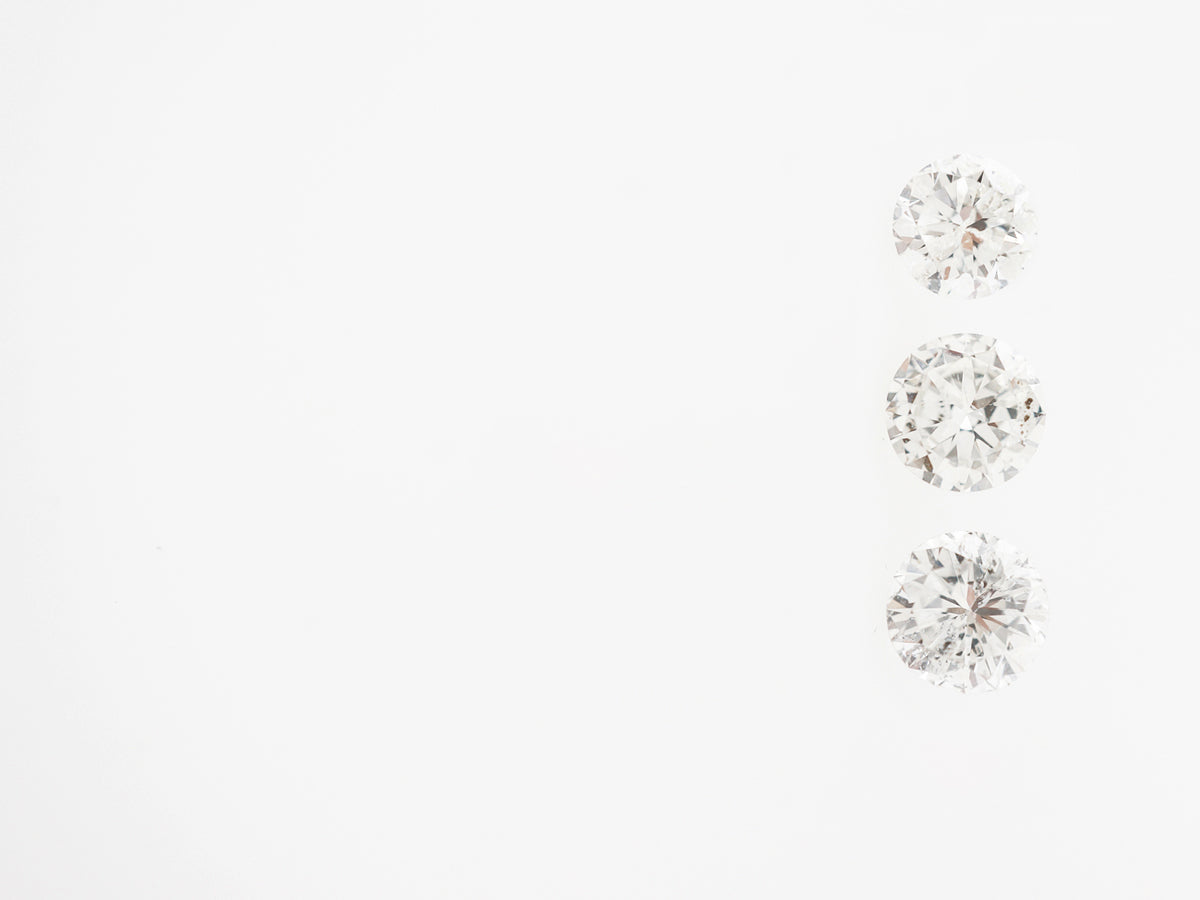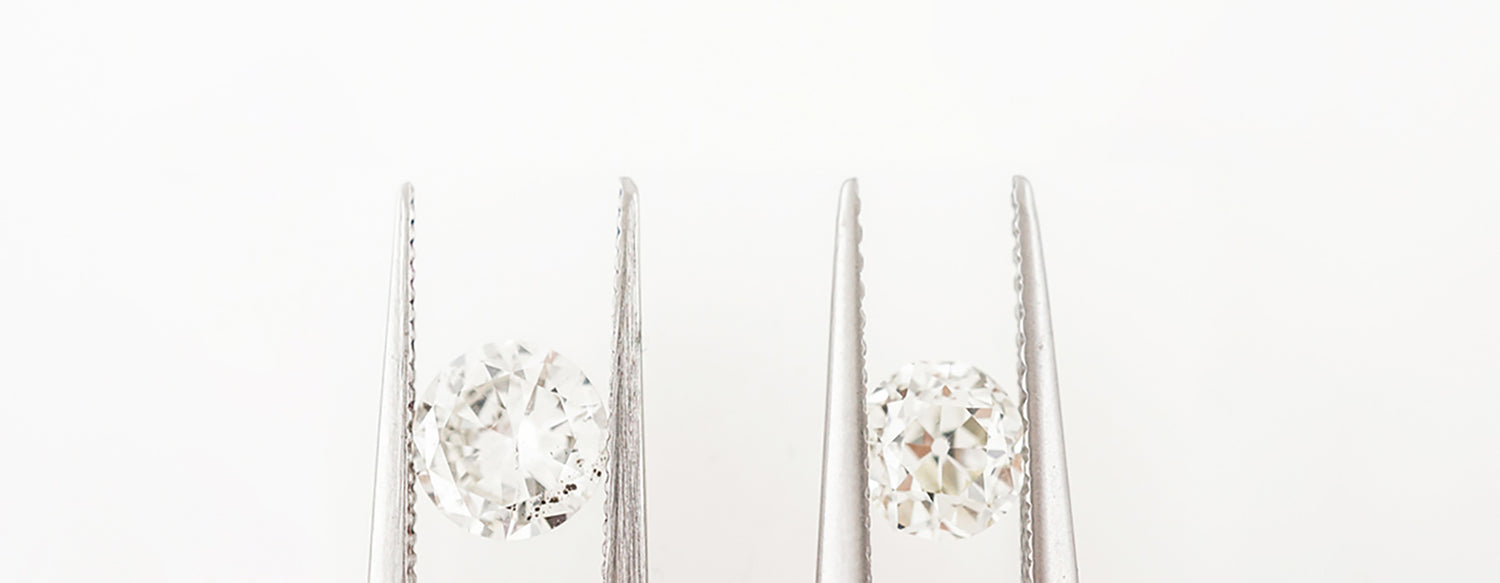
Diamond clarity refers to the presence or absence of internal and external characteristics in a diamond, also known as inclusions and blemishes. These characteristics are natural and can occur during the formation of the diamond. The Gemological Institute of America (GIA) has established a standard for grading diamond clarity, which is widely used in the industry.
The GIA's diamond clarity scale ranges from Flawless (no inclusions or blemishes visible under 10x magnification) to Included (inclusions and blemishes visible to the naked eye). The scale includes the following grades:
Flawless (FL) - No inclusions or blemishes visible under 10x magnification.
Internally Flawless (IF) - No inclusions visible under 10x magnification, only insignificant blemishes present.
Very, Very Slightly Included (VVS1 and VVS2) - Minute inclusions barely visible under 10x magnification.
Very Slightly Included (VS1 and VS2) - Minor inclusions visible under 10x magnification.
Slightly Included (SI1 and SI2) - Noticeable inclusions visible under 10x magnification.
Included (I1, I2, and I3) - Inclusions visible to the naked eye.
When determining a diamond's clarity grade, gemologists use 10x magnification to examine the diamond under specific lighting conditions. The overall appearance of the diamond, as well as the size, number, location, color, and relief of any inclusions and blemishes are taken into consideration.
It's worth noting that while a diamond with a higher clarity grade may be more valuable, the presence of inclusions and blemishes does not necessarily affect the diamond's durability or beauty. In fact, some inclusions can add character to a diamond and make it unique.

Diamonds come in a wide range of colors, from the classic white diamond to fancy colored diamonds in hues like yellow, pink, and blue. The color of a diamond is determined by the presence of certain impurities or structural defects within the diamond.
The most common impurity found in diamonds is nitrogen, which can give the diamond a yellow or brown hue. The less nitrogen present in the diamond, the more colorless or "white" it will appear. Conversely, the more nitrogen present, the more yellow or brown the diamond will appear.
Another factor that can affect the color of a diamond is structural defects within the diamond's crystal lattice. These defects can cause the diamond to absorb light in certain wavelengths, resulting in a specific color. For example, a diamond with a structural defect that causes it to absorb light in the blue wavelength may appear blue.
Fancy colored diamonds, such as pink or yellow, are extremely rare and valuable because of the unique and specific conditions that must be present for them to form. They can be much more expensive than colorless diamonds.
The color of a diamond is graded on a scale from D (colorless) to Z (light yellow or brown). A colorless diamond is considered the most valuable, while diamonds with a yellow or brown tint are considered less valuable.
When choosing a diamond, it is important to note that the color grade is just one aspect to consider. Cut, clarity, and carat weight are also important factors that can affect a diamond's value and appearance.
Diamond carat weight is a measure of a diamond's size, and it is one of the four C's of diamond quality (along with cut, color, and clarity). The carat weight of a diamond is determined by using a highly precise and calibrated scale.
One carat is equal to 0.2 grams or 200 milligrams. This means that a one-carat diamond weighs the same as 0.007 ounces or 0.0022 pounds. Larger diamonds are more rare than smaller diamonds, and thus, a diamond's carat weight plays a significant role in determining its value.
A carat is divided into 100 points, so a diamond that weighs 0.50 carats is also referred to as a 50-point diamond. The weight of a diamond can also be expressed in terms of fractions, such as 1/4 carat, 1/2 carat, or 3/4 carat.
It's worth noting that while a diamond's carat weight is an important factor in determining its value, it's not the only factor. The cut, color, and clarity of a diamond also play a role in determining its overall value. A well-cut diamond with excellent color and clarity can be more valuable than a poorly cut diamond with the same carat weight.
It's also worth noting that the size of a diamond is not the only factor that determines its overall appearance. A diamond with a smaller carat weight but a superior cut, color, and clarity can appear larger and more brilliant than a diamond with a larger carat weight but inferior qualities.

A diamond's cut grade refers to the quality of the cut of the diamond, which can greatly affect its overall beauty and sparkle. The cut of a diamond is determined by the angles and proportions of the diamond's facets, as well as the symmetry and polish of the diamond.
The Gemological Institute of America (GIA) uses the following cut grades for diamonds:
- Excellent: This is the highest cut grade, indicating that the diamond has been cut to the ideal proportions for maximum brilliance and fire.
- Very Good: This cut grade indicates that the diamond has been cut to proportions that are very close to the ideal, resulting in excellent sparkle and beauty.
- Good: A good cut grade indicates that the diamond has been cut to proportions that are slightly less than ideal, but still result in good sparkle and beauty.
- Fair: A fair cut grade indicates that the diamond has been cut to proportions that are far from the ideal, resulting in a lower level of sparkle and beauty.
- Poor: This is the lowest cut grade, indicating that the diamond has been cut to proportions that are well below the ideal, resulting in minimal sparkle and beauty.
When choosing a diamond, it's important to consider the cut grade, as it can greatly affect the diamond's overall beauty and value. A diamond with an excellent cut grade will have greater sparkle and brilliance than one with a poor cut grade.

